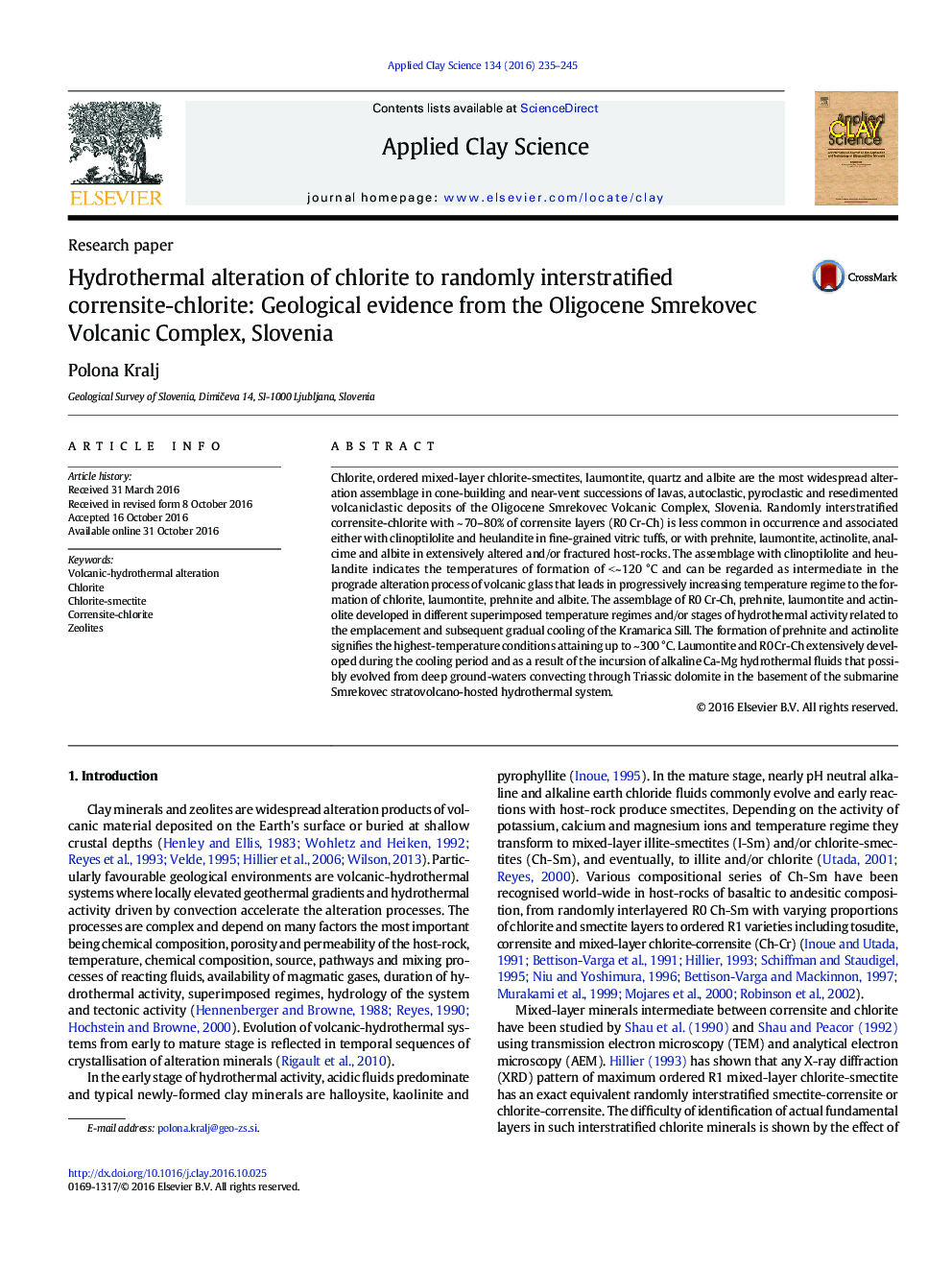| Article ID | Journal | Published Year | Pages | File Type |
|---|---|---|---|---|
| 5469083 | Applied Clay Science | 2016 | 11 Pages |
Abstract
Chlorite, ordered mixed-layer chlorite-smectites, laumontite, quartz and albite are the most widespread alteration assemblage in cone-building and near-vent successions of lavas, autoclastic, pyroclastic and resedimented volcaniclastic deposits of the Oligocene Smrekovec Volcanic Complex, Slovenia. Randomly interstratified corrensite-chlorite with ~ 70-80% of corrensite layers (R0 Cr-Ch) is less common in occurrence and associated either with clinoptilolite and heulandite in fine-grained vitric tuffs, or with prehnite, laumontite, actinolite, analcime and albite in extensively altered and/or fractured host-rocks. The assemblage with clinoptilolite and heulandite indicates the temperatures of formation of <~120 °C and can be regarded as intermediate in the prograde alteration process of volcanic glass that leads in progressively increasing temperature regime to the formation of chlorite, laumontite, prehnite and albite. The assemblage of R0 Cr-Ch, prehnite, laumontite and actinolite developed in different superimposed temperature regimes and/or stages of hydrothermal activity related to the emplacement and subsequent gradual cooling of the Kramarica Sill. The formation of prehnite and actinolite signifies the highest-temperature conditions attaining up to ~ 300 °C. Laumontite and R0 Cr-Ch extensively developed during the cooling period and as a result of the incursion of alkaline Ca-Mg hydrothermal fluids that possibly evolved from deep ground-waters convecting through Triassic dolomite in the basement of the submarine Smrekovec stratovolcano-hosted hydrothermal system.
Related Topics
Physical Sciences and Engineering
Earth and Planetary Sciences
Geochemistry and Petrology
Authors
Polona Kralj,
